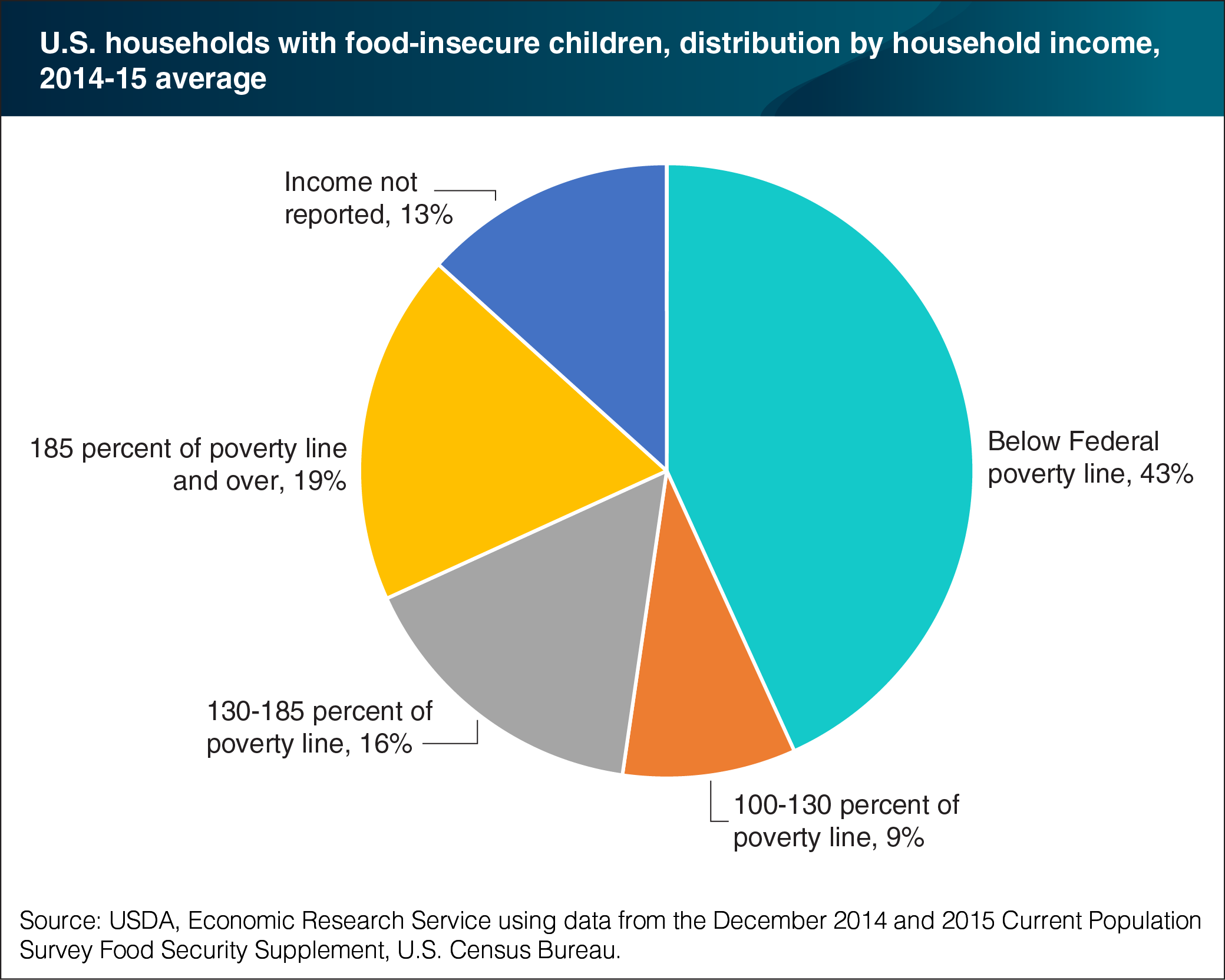Forty-three percent of households with food-insecure children in 2014-15 had incomes below the Federal poverty line
- by Alisha Coleman-Jensen
- 7/26/2017

In 2014-15, 17.9 percent of U.S. households with children under the age of 18 were food insecure—they had difficulty putting enough food on the table for all their members. In about half of these households (8.6 percent of U.S. households with children), children were food insecure and experienced reduced dietary quality and food intake. Food insecurity is closely related to income as poor households are more likely to experience food insecurity. In 2014-15, 43 percent of households with food-insecure children had incomes below the Federal poverty line and one-quarter had incomes between the poverty line and 185 percent of the poverty line. Households with incomes below 185 percent of the poverty line may be eligible for programs like the free- or reduced-price National School Lunch Program. An ERS review of scientific research studies shows that participation in USDA school meals reduces food insecurity. However, about 19 percent of households with food-insecure children in 2014-15 may have been ineligible for such assistance. The data for this chart appear in the ERS report, Children’s Food Security and USDA Child Nutrition Programs, released on June 20, 2017.

